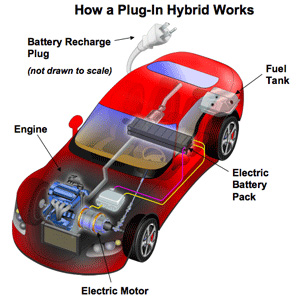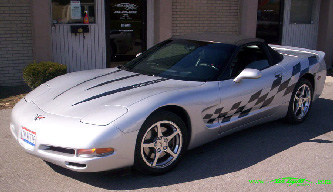|
Reducing Gasoline Consumption |
|
|
It makes economic, environmental and
political sense. |
|
 |
Plug-In Hybrids Hybrid cars currently on the market use a
combination of a gasoline engine and an electric motor. At low speeds
the electric motor powers the car exclusively, and then it is recharged
during the combustion of gasoline. A simple modification to the existing
design (see
http://www.calcars.org/vehicles.html) can achieve even better
emission standards and lower gas consumption. This involves plugging the
car in at night. Of course, the strategy would only pay off on a global
level if the production of electricity is in itself a "green process".
Thus, such vehicles are only recommended where hydroelectricity, solar
cells and wind power are available. |
|
 |
Carbon fiber cars
could dramatically reduce gas consumption by decreasing a car's weight
and therefore the work needed to move the vehicle. (see
http://www.physorg.com/news11436.html
and
http://www.chm.bris.ac.uk/webprojects2002/mjames/homepage.html)
According to tests, carbon fiber is at least equal to steel in
strength, and cars from the new material have also passed crash tests.
The goal is to cut the current
$8 and $10
price of production
to
half in order to make it competitively priced for consumers.
|
|
 |
Public Transit As people move into the suburbs, they
often become multi-car families in the absence of a public transit
system. But when communities invest in an efficient commuter network,
families save money and less NO2 and CO2
contaminate the atmosphere. People are beginning to recognize this
truth. The American Public Transportation Association (APTA) announced
recently that Americans took more trips(10.1 billion) on local public
transportation in 2006 than in any of the previous 48 years.
Furthermore, since 1996, public transportationís growth rate has
outpaced the growth rate of the population and the growth rate of
vehicle miles traveled on our nationís highways. |
|


